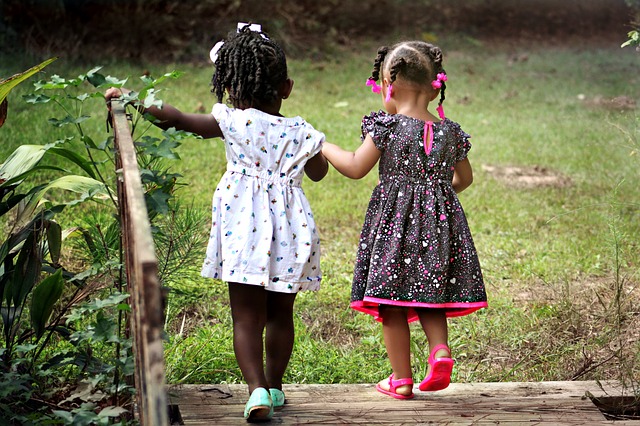Friendship is a relationship of mutual affection between two or more people. Friendship is a stronger form of interpersonal bond than an association. Friendship has been studied in academic fields such as sociology, social psychology, anthropology, and philosophy. Various academic theories of friendship have been proposed, including social exchange theory, equity theory, relational dialectics, and attachment styles. A World Happiness Database study found that people with close friendships are happier.
Although there are many forms of friendship, some of which may vary from place to place, certain characteristics are present in many types of friendship. Such characteristics include affection, sympathy, empathy, honesty, altruism, mutual understanding, and compassion, enjoyment of each other’s company, trust, and the ability to be oneself, express one’s feelings, and make mistakes without fear of judgment from the friend.
While there is no practical limit on what types of people can form a friendship, friends tend to share common backgrounds, occupations, or interests, and have similar demographics.
In the typical sequence of an individual’s emotional development, friendships come after parental bonding and before pair bonding. In the intervening period between the end of early childhood and the onset of full adulthood, friendships are often the most important relationships in the emotional life of the adolescent, and are often more intense than relationships later in life. The absence of friends can be emotionally damaging.
The evolutionary psychology approach to human development has led to the theory of Dunbar’s number, proposed by British anthropologist Robin Dunbar. He theorized that there is a limit of approximately 150 people with whom a human can maintain stable social relationships.
Childhood friends
In childhood, friendships are often based on the sharing of toys, and the enjoyment received from performing activities together. These friendships are maintained through affection, sharing, and creative playtime. While sharing is difficult for children at this age, they are more likely to share with someone they consider to be a friend (Newman & Newman, 2012).[full citation needed] As children mature, they become less individualized and are more aware of others. They begin to see their friends’ points of view, and enjoy playing in groups. They also experience peer rejection as they move through the middle childhood years. Establishing good friendships at a young age helps a child to be better acclimated in society later on in their life (Newman & Newman, 2012).[full citation needed]. In a 1975 study, Bigelow and La Gaipa found that expectations for a “best friend” become increasingly complex as a child gets older.
The study investigated such criteria in a sample of 480 children between the ages of six and fourteen. Their findings highlighted three stages of development in friendship expectations. In the first stage, children emphasized shared activities and the importance of geographical closeness. In the second, they emphasized sharing, loyalty, and commitment. In the final stage, they increasingly desired similar attitudes, values, and interests. According to Berndt, children prize friendships that are high in pro-social behavior, intimacy, and other positive features; they are troubled by friendships that are high in conflict, dominance, rivalry, and other negative features. High-quality friendships have often been assumed to have positive effects on many aspects of children’s social development. Perceived benefits from such friendships include enhanced social success, but they apparently do not include an effect on children’s general self-esteem.
Numerous studies with adults suggest that friendships and other supportive relationships do enhance self-esteem (Berndt, 2002).[full citation needed] Other potential benefits of friendship include the opportunity to learn about empathy and problem solving. Coaching from parents can be useful in helping children to make friends. Eileen Kennedy-Moore describes three key ingredients of children’s friendship formation: (1) openness, (2) similarity, and (3) shared fun. Parents can also help children understand social guidelines they haven’t learned on their own. Drawing from research by Robert Selman and others, Kennedy-Moore outlines developmental stages in children’s friendship, reflecting an increasing capacity to understand others’ perspectives:
“I Want It My Way”, “What’s In It For Me?”, “By the Rules”, “Caring and Sharing”, and “Friends Through Thick and Thin.”
Life events such as marriage, parenthood, and accelerated career development can complicate friendships in the transition from young adulthood to middle adulthood. After marriage, both women and men report having fewer friends of the opposite sex (Friendships, 2012).
Adults may find it particularly difficult to maintain meaningful friendships in the workplace. “The workplace can crackle with competition, so people learn to hide vulnerabilities and quirks from colleagues. Work friendships often take on a transactional feel; it is difficult to say where networking ends and real friendship begins.” Most adults value the financial security of their jobs more than friendship with coworkers.
As family responsibilities and vocational pressures become less, friendships become more important. Among the elderly, friendships can provide links to the larger community; especially for people who cannot go out as often, interactions with friends allow for continued societal interaction. Additionally, older adults in declining health who remain in contact with friends show improved psychological well-being.
Although older adults prefer familiar and established relationships over new ones, friendship formation can continue in old age. With age, elders report that the friends to whom they feel closest are fewer in number and live in the same community. They tend to choose friends whose age, sex, race, ethnicity, and values are like their own. Compared with younger people, fewer older people report other-sex friendships. Older women, in particular, have more secondary friends—people who are not intimates, but with whom they spend time occasionally, such as in groups that meet for lunch or bridge.






